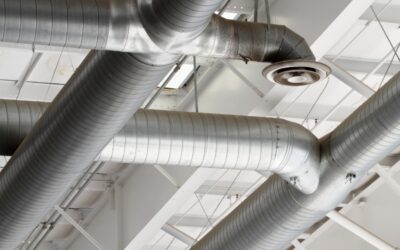Thermostats control a home’s heating and cooling system, meaning that they are responsible for indoor comfort year-round. There’s a lot of inaccurate information regarding the functions and capabilities of thermostats, which can lead to temperature and performance issues. Let’s set the record straight by debunking six of the most common myths about thermostats in Auburn, AL.
1. Thermostat Setting Determines Performance Speed
One very common misconception is that the higher or lower you set your thermostat, the faster your house will warm up or cool down. Your HVAC system produces a set amount of heated or cooled air regardless of the thermostat setting. By programming it for a higher or lower temperature than it is able to accommodate, you are only causing your system to waste energy, become overworked and needlessly increase your energy bill.
2. Thermostat Location Is Unimportant
The location of the thermostat in your home plays an important part in your HVAC system’s performance and in keeping your home at a comfortable temperature. If your thermostat is in an area where the temperature fluctuates, such as near a door or window, close to appliances such as a stove, or in an area that receives direct sunlight, then the thermostat will get different readings frequently, affecting its on/off cycle. If it cycles on too often, then your home will become too warm/cool; If it doesn’t run often enough, it won’t be warm/cool enough to be comfortable.
3. Programmable Thermostats Automatically Reduce Bills
While programmable thermostats are more modern and effective than basic models, they don’t automatically reduce energy use or decrease your utility bill. In order to receive these benefits, you must operate the thermostat correctly to optimize its capabilities. For example, according to the U.S. Department of Energy, by reducing the usual setting on your home’s thermostat for 8 hours a day by 7 to 10 degrees, you will cut your energy bill by as much as 10% annually.
4. Shut It off When You’re Away
On the surface, it seems logical that by turning off your heating and cooling system whenever you and your family are away from home for an extended period of time, your energy bill will decrease. However, this is not true. Once you arrive back home and turn your HVAC system back on, it will take more time and energy usage for your home to heat up or cool down to a comfortable level.
If you turn off your heating and cooling system for a significant amount of time, particularly during extreme weather, then your home’s indoor air quality becomes at risk of being adversely affected as well. If this happens, your family members’ health could suffer. A better and more effective option is to reduce the temperature setting by a few degrees when everyone is away and then adjust it back to the normal setting when they come back home.
5. One Thermostat Is Enough
No matter the size of the house, multiple thermostats will provide more comfort throughout as well as save energy and decrease utility bills. In homes with several “zones” relating to the heating and cooling preferences of the rooms’ occupants, multiple thermostats keep things running smoothly. Installing an updated master thermostat that receives temperature readings from individual room sensors and maintains the room temperature at the desired setting provides maximum efficiency and comfort.
6. One-Degree Changes Don’t Matter
A change of a single degree on the setting of your home thermostat can actually make a difference in energy usage and in your utility bill. For every one degree you reduce your thermostat’s setting, your utility bill decreases by 1%. That may not seem like a lot but changing the setting by one degree at a time until you find the lowest setting that keeps your home comfortable can add up to significant savings over time.
Know Your HVAC Facts
With so much false and misleading information out there, it’s important to have a reliable HVAC source. Contact Indoor Solutions Inc. with any questions about your HVAC system and for all your heating and cooling needs, from professional HVAC maintenance to installation and repair services and much more.
Image provided by iStock




